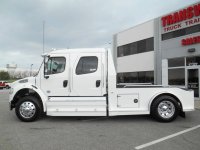On horse trailers (moreso with living quarters), flatbeds, and toy haulers, I like to figure using worst case scenario. GVWR with 25% on the truck is about worst case. On a flatbed, you can usually manipulate the load, for proper distribution. With a living quarters trailer, the front weight is going to be closer to a constant than the garage/stock part. You’re putting the biggest variable (ATV/horses) as far from the tongue, as possible. This will have the biggest effect on tongue weight. Yes, a lot of weight in the back will relieve tongue weight. The issue then becomes where the axles are placed and how far apart they are.
If you look at axle placement on a typical toy hauler camper the axles are usually about 2/3 from the tongue, towards the back. They are designed for non-living static loads of a couple thousand pounds (some will hold cars, but those are usually goosenecks built like horse trailers). Most horse trailers, moreso if the have with living quarters, have the axles set much closer to the back end of the trailer. These trailers are designed for a live, dynamic load and much more weight, in the cargo area. The reason for the axles being further back is the stability of the load. The closer the trailer axles are to the truck, the worse the pendulum effect will be. Spreading the axles between the tow vehicle to the trailers makes it much more stable, especially, when you have thousands of pounds of animals moving around (toy hauler load shift is usually found spread down the highway). The real world effect of this is the horses standing over or behind the trailer axles relieves a lot less tongue weight than than the effect seen by removing an ATV from a toy hauler.
Here’s some examples.
Typical camper toy hauler:
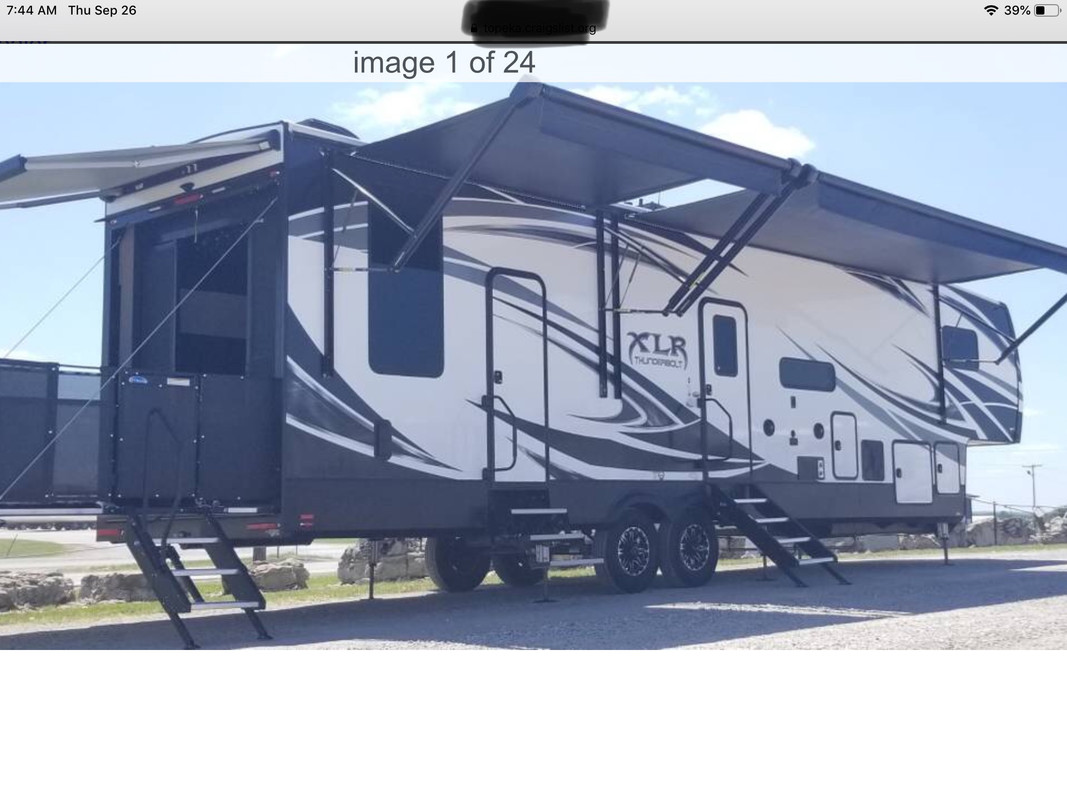

You can see the heaviest part of the load goes entirely behind the trailer axles, this will relieve a lot of tongue weight. I commonly hear about 500 lbs being taken off the tongue with a Polaris RZR in the garage.
Now, look at a typical living quarters horse trailer (I found a big one, since that’s what we’re talking about.
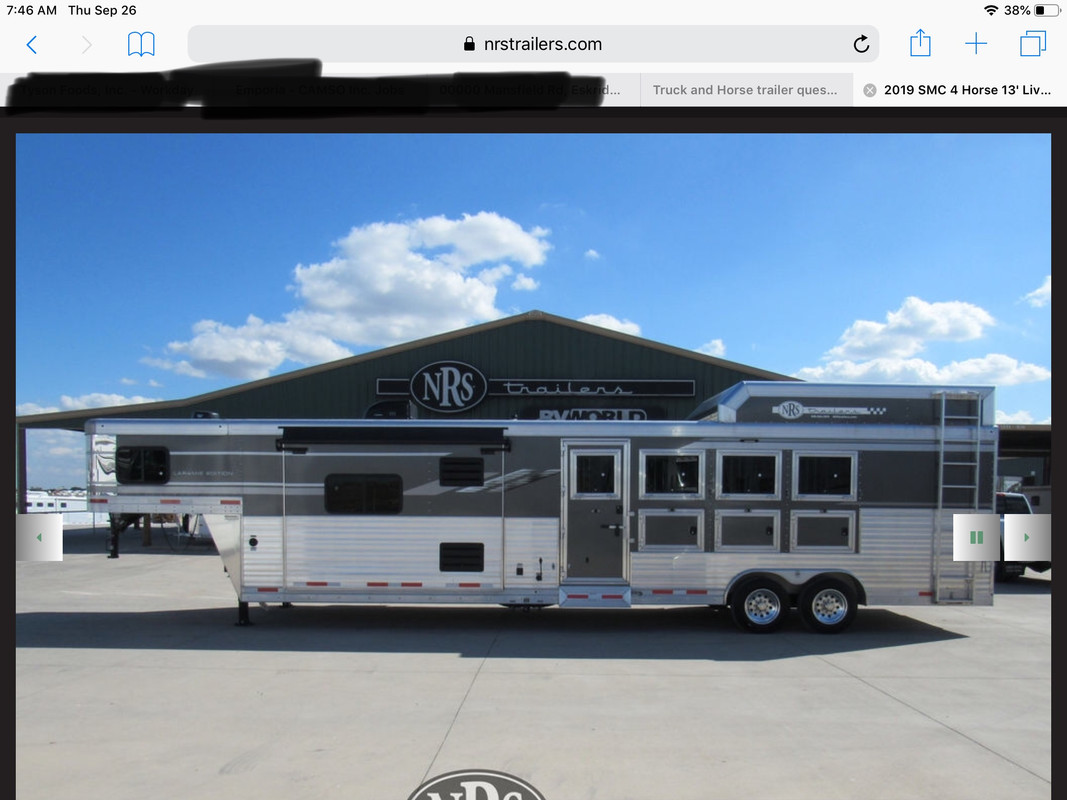
See how the axles are much closer to the rear of the trailer? With the four horses slanted, the majority of their weight goes over the axles. Even with four large horses, most of their weight will go directly onto the trailer axles, very little of it will be transferred anywhere else. The only real tongue relief you’re going to get is from the hay on the hay rack and what’s in the rear tack storage area. Even several hundred pounds, here, will not make much difference to the tongue weight. Look back at the toy hauler, putting over 1,000 pounds fully behind the trailer axles generally nets a tongue weight savings of less than half.
Here’s another large horse trailer, with a different axle setup:
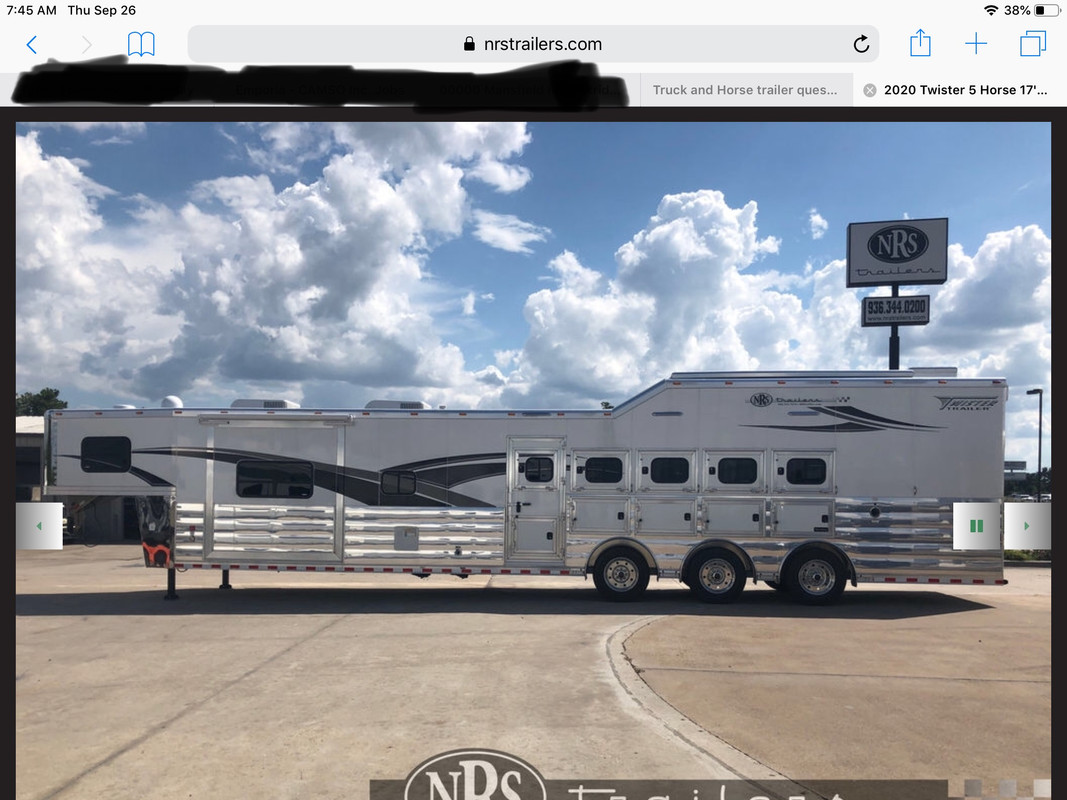
Notice how they are spread further apart. This will spread the main load (horses) over even more area, to keep their weight on the trailer axles. This is a five horse. Perhaps, you could load just the two rear stalls and see a bit more tongue weight reduced, but if you were only hauling two horses, just get a smaller trailer. As soon as you put five horses in, they will go right back to countering what’s in the rearmost stalls.
Here’s a picture of two double axles, showing the axle spread differences (two new trailers). It’s quite dramatic:
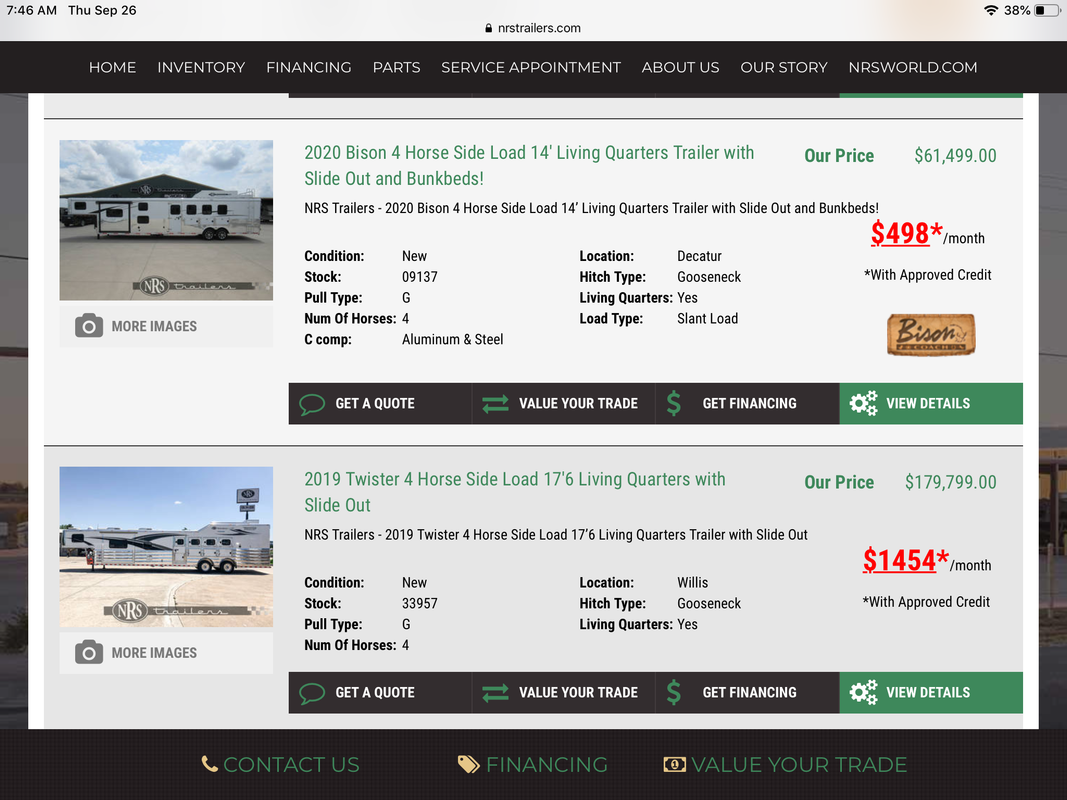
Most of the trailers shown (horse) have GVWR (for the trailer only) of 16,000-20,000. Solid dually territory. The triple axle trailer is rather at 30,000 lbs. those are triple duals.





